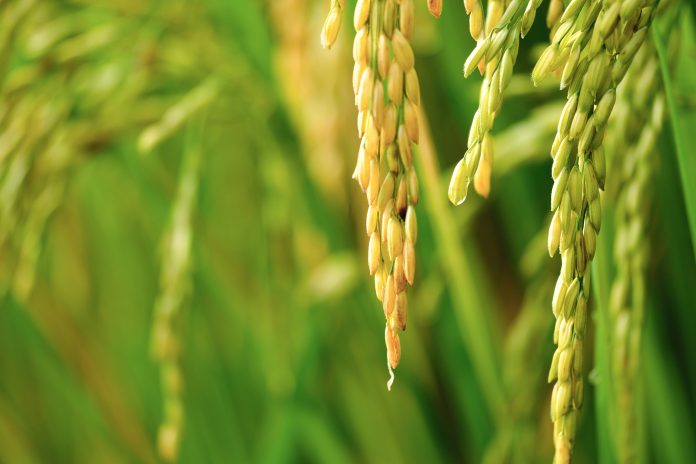Aarthi Janakiraman, Research Manager, Chemicals and Advanced Materials at TechVision, Frost & Sullivan, ponders if R&D activities raise rice to the league of superfoods
Rice along with wheat and maize is one of the world’s three leading food crop and is a staple food for more than half of the world’s population. It is one of the most predominantly cultivated crops in Asia and Africa and is indigenous to the diet of people in these continents with increasing popularity in the Caribbean and Latin America. Rice is considered a low-cost crop compared to wheat and maize and is often the major nutrient source amongst the low- and middle-income groups in various countries. With more than thousands of varieties of rice cultivated and consumed across 100 countries, there is definitely one or more type that resonates to the varying preferences and palates of people from different cultures and ethnicities and economic groups, be it in the form of risotto of Italy, rice and beans of Mexico, coconut rice of Asia and Portugal or Paella of Spain.
Rice as a staple food crop
Both Asian rice (Oryza sativa) and African rice (Oryza glaberrima) can be divided into two broad groups: long-grain and short-grain with others such as glutinous rice and aromatic rice are popular. Despite its type or origin, almost all varieties are processed post-harvest and classified as either white or brown (whole grain); it is commonly acknowledged that brown rice has more health benefits (due to the comparatively minimal processing done) while white rice is most commonly consumed. Apart from being a staple in diet, it also renders itself as a base for the manufacture of various products such as rice flour, rice bran oil, and so on.
Rice is considered as one of the nutrient-dense crops and is a major source of carbohydrates. Brown rice varieties are comparatively higher in fibre, vitamins and minerals such as magnesium, phosphorus, etc. than white rice. While rice protein is high in nutritional quality, the content itself varies and is highly susceptible to environmental factors during cultivation, crop management and other factors. The nutritional quality, like any other crop, depends on the variety, processing techniques used and preparation methods.
Acknowledging its claim as one of the top staples across economic groups, the World Health Organization (WHO) has ongoing programmes towards its fortification, especially on increasing the micronutrients and vitamins profile and terms it as a “public health strategy”. WHO also notes that rice fortification can help in improving the nutritional availability of vulnerable populations compared to similar programmes for wheat or maize flour. A key challenge concerning these global programmes is that most of the rice crop is cultivated and processed locally, making mass fortification challenging. Countries have been active in launching R&D programmes targeted towards specific varieties of rice focused on improving not only the cultivation and crop management practices but also its overall nutritional profile.
Continuous R&D activities witnessed across geographies
The United Nations has declared 2020 as the International Year of Plant Health to raise awareness on how plant protection can help end hunger, reduce poverty, conserve the environment and promote economic development. This aligns well with the various ongoing R&D activities witnessed across the globe in order to track, monitor and improve crop health, increase the nutritional profile from “farm to fork” and also aid in improving the economic well-being of farmers and cultivators.
Research that focuses on analysing the application of artificial intelligence (AI) and the use of artificial neural networks for analysing the effect of agrochemicals during the cultivation of major staples on human health and preventing health hazards, which highlights the importance of technology to improve cultivation practices. Studies investigating and characterising microbiome and other constituents in the rice rhizosphere helps in promoting crop health and increasing the nutritional profile. R&D efforts are also targeted towards improving rice grain quality and investigating how traditional traits can improve health benefits and crop yield.
Research and breeding programmes have been established in various countries not only to improve crop yield and quality but also to develop new varieties of rice with enhanced nutritional profile and disease resistance. One such success story is that of Riceberry, the result of collaborative efforts of Kasetsart University’s Rice Science Centre in Thailand and Apichart Vanavichit’s research team. From the time it entered into the Thai market ten years ago, the variety has been steadily gaining in popularity.
Riceberry: The next superfood?
A cross-breed of Jao Hom Nin (a non-glutinous Thai purple rice) and Khao Dawk Mali 105 (Thai Jasmine), it is high in antioxidants and minerals like zinc and iron and takes less time to cook compared to its parents. Its anthocyanin stability, dietary fibre and complex carbohydrate content make it popular amongst the health-conscious demographic segments. While it’s largely considered as an organic offering for premium segments, the purple-black coloured grain with its nutritional and easy cooking properties is increasing in popularity and ongoing efforts (more than 60 research projects and around 40 patent applications and 18 endorsed patents) can result in the breed becoming mainstream.
Rice: The final word
The importance of rice as a key economic crop is undeniable, considering its role as a staple in diets of more than 50% of the world population. It is also one of the few crops that is majorly cultivated by small farmers, making it essential to ensure best practices are followed to enhance yield and ensure income. Research towards developing new breeds and enhancing nutritive value, developing and implementing new technologies for all types of farmers can play a key role in contributing to global efforts directed at poverty alleviation.
Acknowledgement
I would like to thank the TechVision Group at Frost & Sullivan who helped in providing insights for this article.
References
1. Elahi E., Weijun C., Zhang H., Nazeer M., Agricultural intensification and damages to human health in relation to agrochemicals: Application of artificial intelligence, (2019) Land Use Policy, 83, pp. 461-474.
2. Elahi E., Weijun C., Zhang H., Abid M., Use of artificial neural networks to rescue agrochemical-based health hazards: A resource optimisation method for cleaner crop production, (2019) Journal of Cleaner Production, 238 , art. no. 117900.
3. Long-Jun Ding, Hui-Ling Cui, San-An Nie, Xi-En Long, Gui-Lan Duan, Yong-Guan Zhu, Microbiomes inhabiting rice roots and rhizosphere, FEMS Microbiology Ecology, Volume 95, Issue 5, May 2019, fiz040, https://doi.org/10.1093/femsec/fiz040.
4. Zhou, H., Xia, D. & He, Y. Rice grain quality—traditional traits for high quality rice and health-plus substances. Mol Breeding 40, 1 (2020). https://doi.org/10.1007/s11032-019-1080-6.











